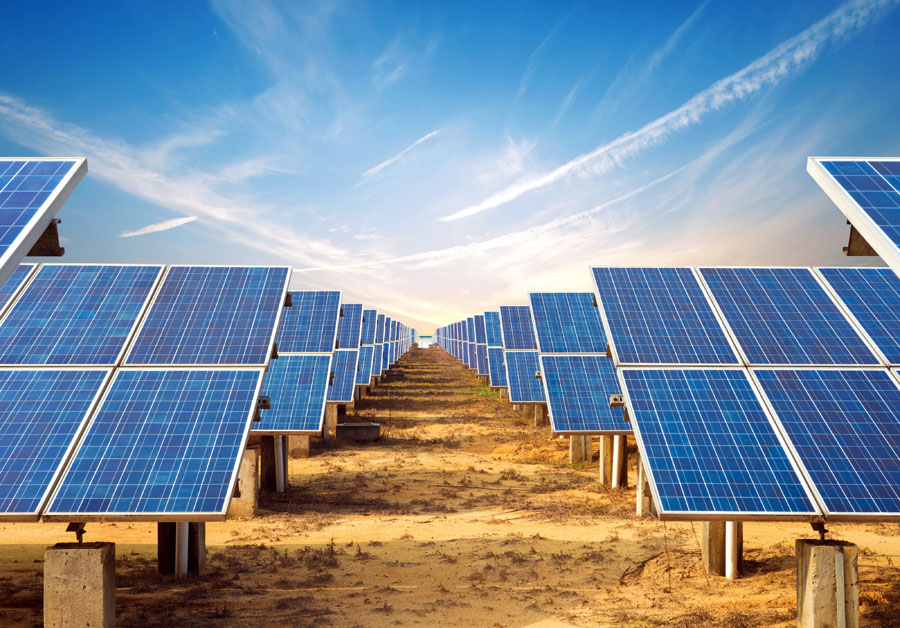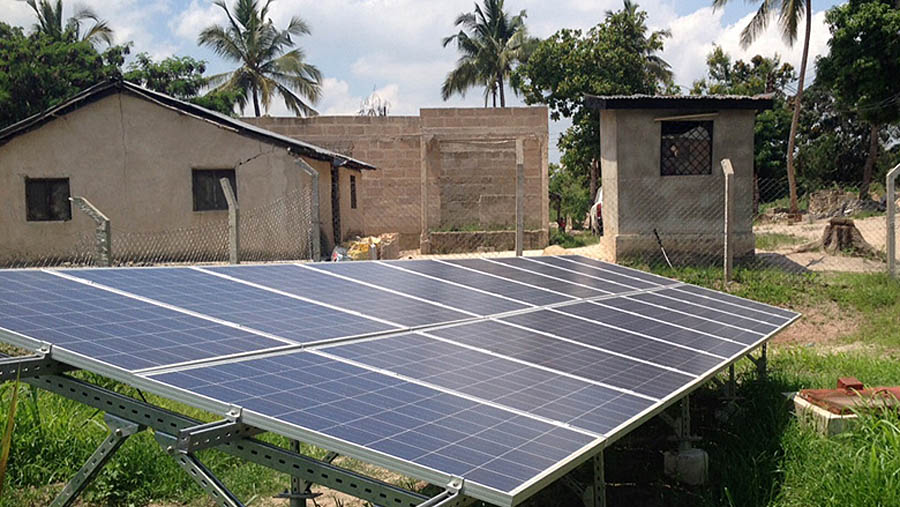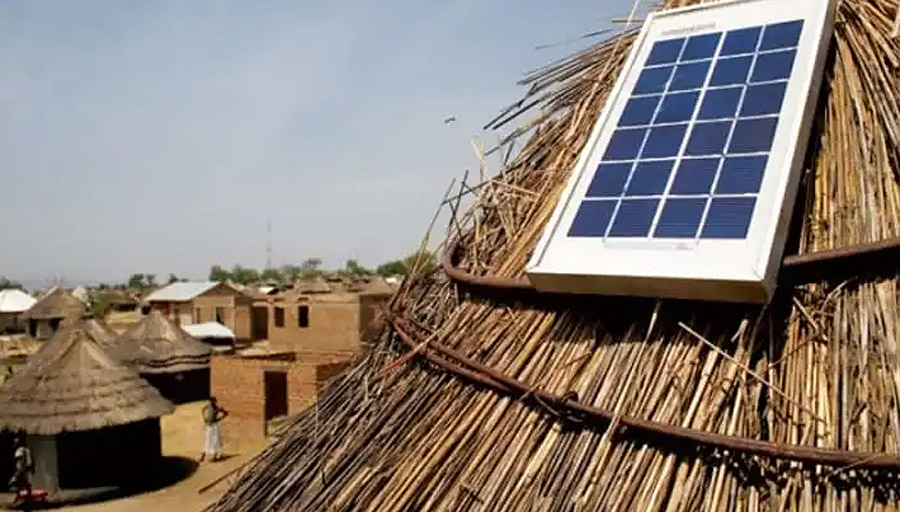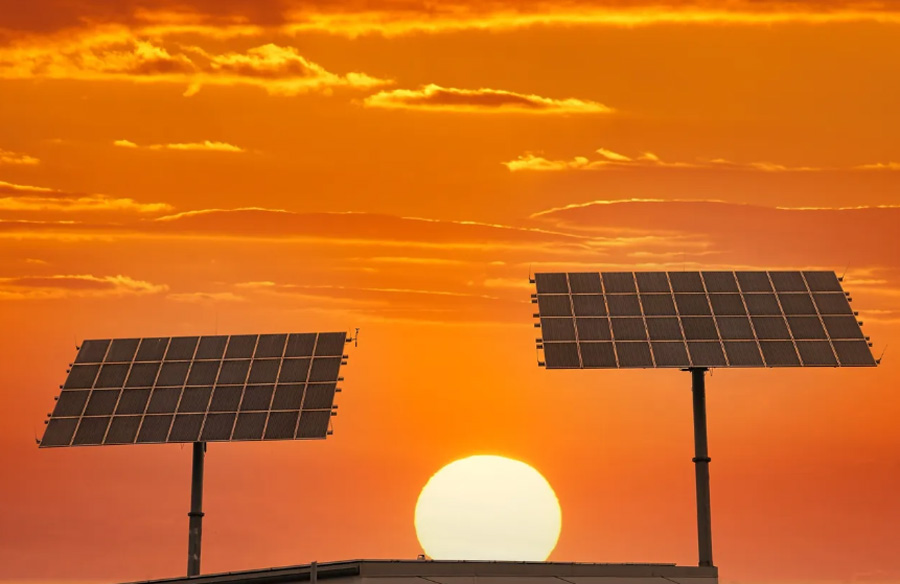
Trends in Solar Energy in Africa Right Now
Solar power generation can be divided into grid-connected power generation and off-grid power generation according to whether it is integrated into the existing power grid, and off-grid power generation can be divided into solar mini-power generation (mini-grid) and off-grid solar products.
I. Grid-connected solar power generation
In sub-Saharan Africa, most countries have a strong desire to develop sustainable solar projects, but few have completed renewable energy master plans, and nearly 90% of countries do not meet the necessary conditions for sustainable solar project development, such as: renewable energy integration studies; completion of minimum cost generation, transmission and electrification plans; plans for developing solar projects; and hiring professional consultants. consultants, etc.
According to the World Bank’s assessment of sub-Saharan Africa, 3/4 of the countries in the region have weak grids and cannot afford to connect more than 5-10% of their photovoltaic power to the grid. In order to achieve the target of accommodating solar PV in the existing grid system (over 22 GW) by 2025, public investment in grid upgrades, dispatch upgrades and electricity storage of over US$1 billion and private investment of over US$17 billion will be required.
Solar off-grid power generation
1. Small-scale solar power generation
A new third generation of “Mini-Grids” has emerged in recent years. These mini-grids are solar hybrid systems that incorporate the latest technologies such as smart meters and remote monitoring systems. interconnected to the mains grid.
The number of solar hybrid energy Mini-Grids projects between 2014-2018 is double that of the period 2009-2013. More than 7,500 Mini-Grids are planned to be installed in Africa in the next few years, which could supply more than 27 million people.ESMAP (Energy Sector Management Assistance Program of the World Bank) studies also show that the investment cost of Mini-Grids has decreased from more than 8,000 USD/kW in 2010 to 3,900 USD/kW in 2018. By 2030, investment costs for solar and solar hybrid Mini-Grids could fall to less than USD 3,000/kW.
2. OGS (Off-Grid Solar Products)
The main segments of the OGS (Off-Grid Solar Products) market are divided into three main categories depending on price and functionality: Pico (small micro solar products, including small portable solar lamps, torches or luminaires), Plug and Play household appliances (PnP, including mobile charging stations, radios, fans, TVs, etc.) and Solar Home Power Systems (SHS, including home lighting systems and large systems for large systems for powering household appliances).
From 2017-2019, the annual sales volume of OGS products grows steadily at 10%, reaching approximately USD 1.75 billion in 2019. Although this is a sizeable market in the long term (around USD 8 billion by 2022), few off-grid solar companies are currently able to turn a profit. With more than 80% of people without access to electricity living in sub-Saharan Africa, and the largest number of these countries being Nigeria (89 million), the Democratic Republic of Congo (68 million) and Ethiopia (61 million), the demand for OGS products is also huge, according to an analysis of a World Bank report.

Solar Power Project Development Steps
Solar power project development is a multi-stage process involving a multidisciplinary team of experts. First the project developer identifies an electricity market that offers sufficient risk-reward opportunities, then specifies the site where the project will be built and secures land tenure for that site, then conducts two separate rounds of technical-financial assessments (pre-feasibility and feasibility studies), obtains all necessary permits and licences, secures power purchase and feed-in agreements, arranges financing, and selects a team to design and build the project (usually an EPC contractor), oversee the construction of the project, and carry out testing and operation and maintenance.
As the project moves from one stage to the next, the technical financial assessment becomes more detailed until the final design is completed and construction begins PV project development steps depend on site-specific parameters and developer priorities, risk appetite, regulatory requirements and the type of financing support mechanism (i.e. above-market interest rates/subsidies or tax credits) in a given market. The development steps can be broadly divided into four stages as follows.
I. Concept development and site identification
The concept development phase involves the identification of site-specific investment opportunities and the development of a project development strategy. The concept development phase is an iterative process to develop an understanding of the risks, project-specific costs and benefits that will enable an assessment of the project economics. The developer’s goal is to obtain enough information to make an informed decision about the likelihood that the project can proceed. If the project looks promising, the developer is likely to decide to move on to the next stage.
This stage involves confirming the following: identification of suitable sites with good solar resources, land available for purchase or long-term lease, favourable grid access (distance, capacity and access policies) and no environmental or social issues; whether the state and the electricity sector offer sufficient risk-reward benefits to private developers; regulatory support and tariffs, in particular the duration of any solar incentives; availability of funding to undertake a feasibility assessment; identification of offtakers and available infrastructure to determine the project’s generation capacity.
ii. pre-feasibility/feasibility study stage
The purpose of a pre-feasibility study is to develop a preliminary project design and investment requirements in order to further assess the financial viability of the project. This assessment involves more detail than the previous stage and determines whether to proceed with the project and invest additional funds. Given the uncertainty of the data available at this stage, the viability of the project will be determined based on a minimum financial threshold rate.
The scope of this phase is outlined as follows: assessment of the site and boundary area; completion of the conceptual design, including consideration of technology options and their financial implications; approximate costs of land, equipment, delivery, construction and operation and projected revenues; determination of expected tariffs and review of expected terms/conditions of the PPA in the relevant market; further financial analysis; cost and likelihood of achieving grid connection within a defined timeframe; completion of an assessment of the current and assessment of the potential future regulatory environment; initial concept of the project legal/corporate structure; solutions to project challenges; identification of licensing requirements/costs; preliminary project timeline/workflow showing key activity intervals for drafting.
The feasibility phase will build on the work undertaken in the pre-feasibility phase by assessing in more detail using site-specific data (e.g. solar resource measurements) and should consider in more detail any constraints previously identified. If multiple project locations are being assessed, a preferred location will need to be selected. The purpose of the feasibility study is to provide more detailed information on the potential project design, investment requirements and financing and implementation plans. If the results of the study are favourable, the developer should be prepared to commit more resources to take the project forward to the financing stage.
The typical scope of a pre-feasibility study is outlined as follows: detailed site plan; assessment of solar resources, including shading assessment; detailed review of environmental and social factors; detailed review of required permits and licences, assessment of capital expenditure on technology and supplier options; pre-project application discussions with relevant agencies; completion of initial consultations with key stakeholders, including the community; feed-in assessment is completed; forecast electricity production determined; further assessment of expected tariff; financial analysis; preliminary financing plan; project implementation plan developed; option agreement for land use rights (if required) secured; project and project company business structure assessed and conceptualised.
III. Permitting, financing and contracts
Following the feasibility stage, assuming the project remains financially viable, the project will proceed to the next stage. This includes obtaining the final licence, obtaining project financing and pre-implementation activities (commercial contracts). The timing and sequence of this stage varies from project to project, but this stage typically includes the following activities: involvement of the relevant communities or stakeholders; preparation and submission of relevant permit and licence applications and associated documentation for the proposed project; environmental and social assessment (agreed in consultation with the licensing authority and other statutory bodies), which may include a full environmental and social impact assessment (ESIA);
Preparation and submission of grid connection applications; review of designs and any permit/consent conditions; modification of designs or consents as required; decisions on financing methods (e.g. sources and proportions of equity and debt, including construction financing); contracting strategy decisions (i.e. EPC contracts or multi-contracts) and selection and contract negotiations; preparation of PPA documentation and final negotiations; preparation of O&M concepts and related contracts;
Signing of grid interconnection agreements with grid operators or relevant agencies; preparation of detailed bankable financial models covering the entire life cycle of the plant; completion of project risk analysis; finalisation of all land, surface area and tenure agreements and conversion to long-term leases or easements as required land agreement options; finalisation of detailed project implementation plans.
iv. engineering, construction and commercial operations
The EPC contract is most commonly used for the development of PV power projects, where the EPC contractor is responsible for the entire project. This phase requires the EPC contractor to identify the solar resource, complete the detailed design of the PV project, specify its power generation capacity, procure equipment according to specifications agreed with the developer, construct the PV plant, conduct acceptance tests and hand over the plant to the developer/operator for commercial operation.

Development Process Risk Identification and Control
The main reasons for the hindrance of PV energy deployment at scale are risk-reward issues, such as grid integration constraints, offtaker risks and weak developer procurement and planning capacity. These key risks have hindered the process of attracting private finance to invest in PV power in African countries.
I. Risk identification
Although the risks involved in the development of solar power projects are inherent to each country due to its context, there are common risks in most African countries that can be divided into two main categories: development phase risks and operational phase risks.
Development phase risks include: grid risks, including connection risks and the risk that the project may have curtailed generation based on incomplete grid studies; land risks, land tenure, including land availability, and permitting also including associated environmental and social risks; legal risks, including the applicable regulatory, arbitration and judicial framework; and procurement risks.
Operational phase risks include: offtaker credit risk, including offtaker performance records and payment and contract termination risks; national power sector risks, including sector financial sustainability risks, reform risks, regulatory risks and delays in government construction work; market risks, including currency risks and interest rate risks; country and macroeconomic risks; political risks, including default risks, expropriation, transfer restrictions and currency non-convertibility, war and civil unrest.
II. Key risk controls
1. Grid risk
The ability of the grid to accept the output of a solar power plant will depend on the existing network infrastructure and the current load on the system, therefore the project must be based on a complete grid study and if the grid does not have sufficient capacity for connection, it should do so by: limiting the maximum power output to what the grid allows; upgrading the grid; increasing export capacity; and reducing the generation capacity of the proposed project.
2. Offtaker risk
There is often only one or a few offtakers of electricity in African countries and the offtakers may not have strong balance sheets or credit histories. Such risks should be faced by: conducting a thorough assessment of the offtaker’s creditworthiness; considering the option of selling power to other offtakers in the event of default; seeking guarantees from government or multilateral financial institutions; and establishing reserve accounts.
3. Land risk
Secured land rights are critical to long-term investment and financing. The main asset secured by a solar power project is the solar power plant, whose ownership relies on legal rights to the land, and land ownership is a prerequisite for the SPV company to be able to maintain ownership of the plant for the duration of the project agreement (PPA and financing agreement). Depending on the legal structure of the land in the host country, which can be acquired through formal, informal or conventional regimes, developers should assess the country’s land ownership regime in advance of the project to assess the security of land that the regime provides for their project.
Developers should choose countries that are politically stable and have a strong regulatory framework and long-term policies to support solar PV projects, and be wary of over-reliance on incentive systems. Governments must implement improved systems that address the significant risks perceived by private developers, while at the same time developing robust legal and regulatory mechanisms to minimise public risk.

Summary and recommendations
Africa is rich in photovoltaic resources, and the risks and opportunities of solar energy development coexist. Chinese companies interested in investing in project development are advised to pay attention to the following three points.
Firstly, it is important to base on planning. A comprehensive assessment of the on-grid and off-grid electricity demand in the priority countries should be carried out to determine what kind of capacity is needed to meet the demand within a certain period of time, what is the optimal capacity of new energy sources under the existing grid load, how much new energy can be integrated into the grid, what grid upgrades and dispatch upgrades are needed to achieve the medium and long-term goals of the existing grid system to accommodate new energy sources, etc. The power development plan allows companies to increase their investment in electricity. Power development planning allows companies to increase their initiative in the implementation of developments in the power sector, as well as to understand and mitigate the risks involved in the development process and help developers choose the best development strategies and projects.
Secondly, intervene in off-grid power development projects. In Africa, large off-grid areas make solar photovoltaic power generation more economically viable. Solar small-scale power generation (grid) and solar home power systems (SHS) are characterised by high flexibility and wide distribution, simple access forms, no need for grid access, and can be directly consumed in the region, which is in line with the current situation and needs of local electricity consumption in Africa. Given that China has already implemented a standardised management model for power plant chains, this kind of large-scale synergy management model can effectively improve efficiency and corporate profitability, and this kind of distributed energy package development model can be fully applied to the African market.
Thirdly, improve the risk assessment and control mechanism for project development. Although the current political and regional security in Africa is generally stable, it is still a risky area for investment. Insufficient credit for power offtakers, inadequate legal and regulatory frameworks for solar development, and grid risks are the main reasons why private investment has been held back. In order to allow for greater private participation, African countries need to put in place specific regulations to ensure consistency from the constitution to local regulations, especially with the current situation of state-owned power monopolies, and the need to ensure the long-term stability of the regulatory framework to eliminate the main risks of concern to private developers.

